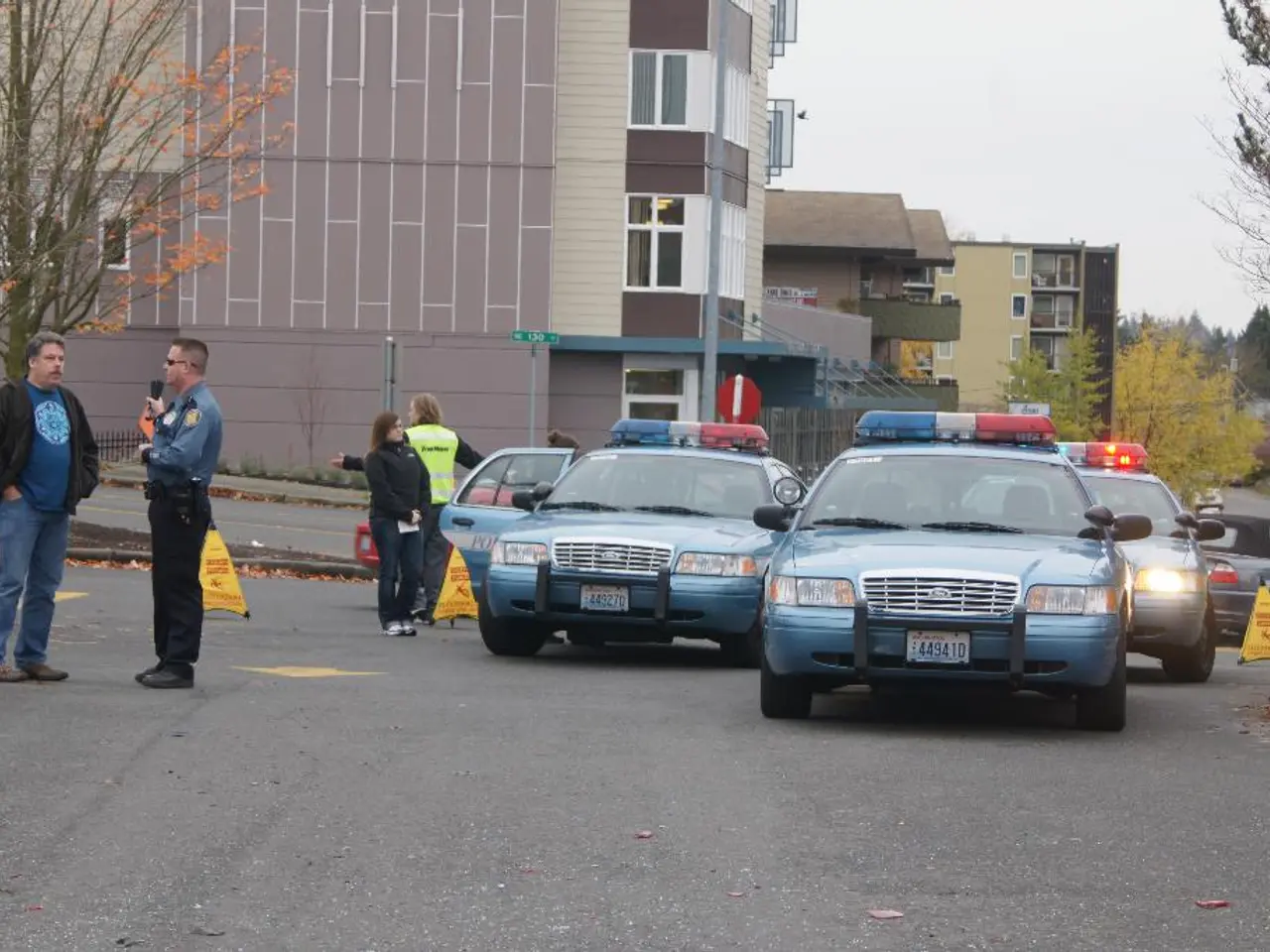Texas Officals under Fire for Handling of Devastating and Fatal Floods
In the heart of Texas, the destructive July 2021 flash flood along the Guadalupe River left a trail of devastation and tragedy. Nineteen people, including nine from the Flowers family, scrambled into the attic for safety as their homes were engulfed by the rapid and severe flooding [1]. The majority of the dead were recovered from Camp Mystic, a Christian summer camp along a river in Kerr County.
The National Weather Service (NWS) office in New Braunfels had been staffed up with extra forecasters during the incident, issuing flash flood warnings and emergencies before the disaster struck. An initial flood watch was issued at 1:18 p.m. Thursday, predicting between 5 to 7 inches of rain. However, the lack of a flood warning system in Kerr County, a proposal that was considered but not realized due to cost, may have contributed to the delayed evacuation [2].
As the floodwaters surged, reaching 20-26 feet within 90 minutes, residents and camps along the river may have had limited warning or insufficient time to react. Flash floods can develop with very little lead time due to sudden heavy rainfall upstream, making timely evacuations challenging. Coordination and communication for evacuation in remote or recreational areas can also be slow or complicated, exacerbating the situation [3].
The NWS office issued an urgent warning at 4:03 a.m., raising the potential of catastrophic damage and a severe threat to human life. Yet, the exact nature of the alarm systems in place at the camps remains unclear. Jonathan Porter, the chief meteorologist at AccuWeather, suggested that evacuations and other proactive measures could have reduced the risk of fatalities [4].
Kerrville City Manager Dalton Rice experienced a sudden rise in water levels at 5:20 a.m. during the incident. At least 43 people have been confirmed dead, with an unknown number still missing in Kerr County. Christopher Flowers, one of the survivors, woke up in darkness to electrical sockets popping and ankle-deep water [5].
Local officials have defended their actions, stating they had not expected such an intense downpour. However, the desensitization of the public to too many weather warnings may have played a role in the delayed response [6]. U.S. Secretary of Homeland Security Kristi Noem emphasized the difficulty for forecasters to predict the amount of rainfall [7].
As the community grapples with the aftermath of this devastating event, questions remain about the role of early warnings, evacuation procedures, and the potential for improved infrastructure to better protect those living in flood-prone areas.
- The lack of a flood warning system in Kerr County, despite it being proposed, might have hindered timely evacuations during the business of managing the July 2021 flash flood in Texas.
- In addition to the destructive flash flood in Texas, the incident also brought attention to the role of technology, such as communication systems and weather forecasting, in dealing with emergency situations, like car-accidents, crime-and-justice, and political issues.
- The National Weather Service (NWS) office in New Braunfels issued urgent warnings and emergencies to prevent the flash flood disaster, but the exact nature of the alarm systems in place at the camps remains unclear, raising concerns about the effectiveness of general-news and crime-and-justice reporting in informing the public about potential dangers.





